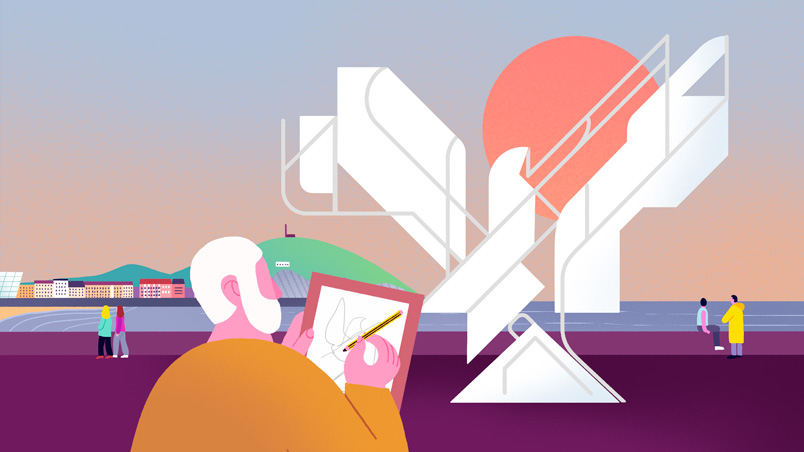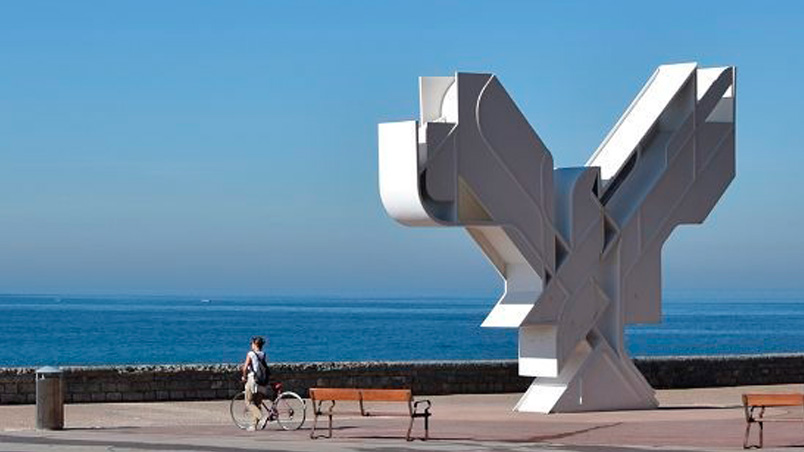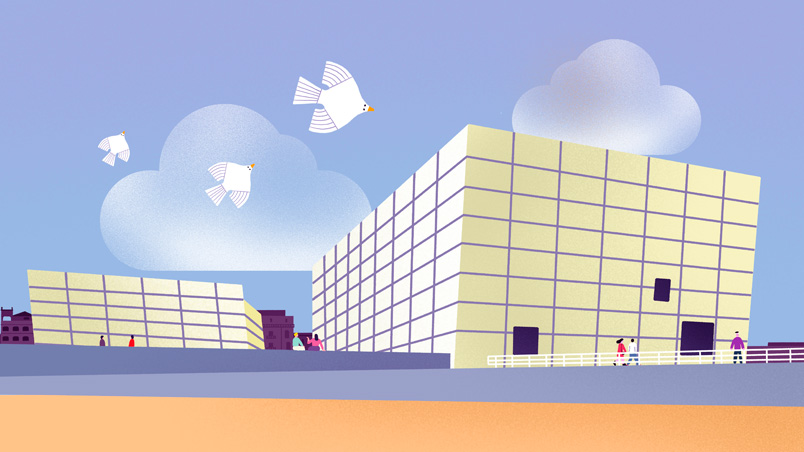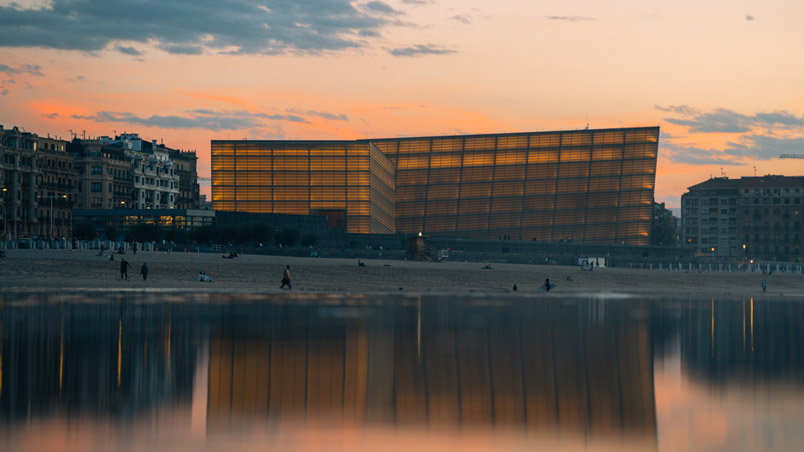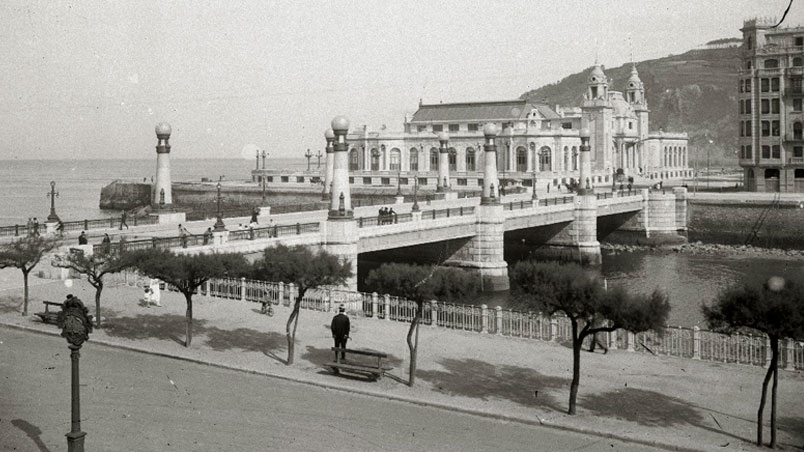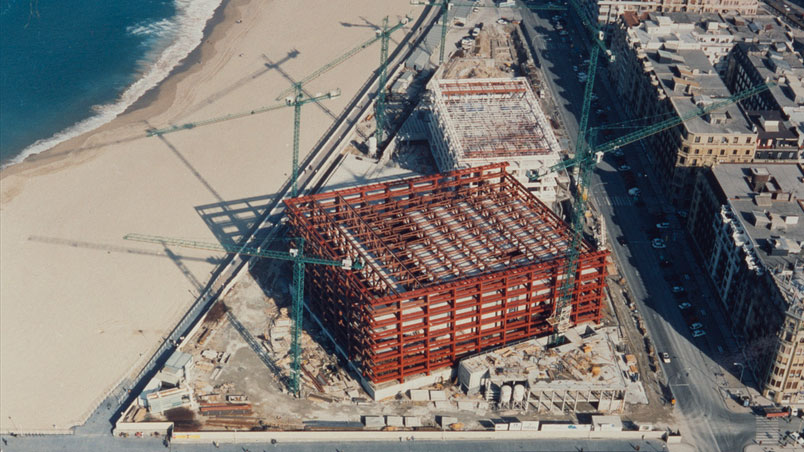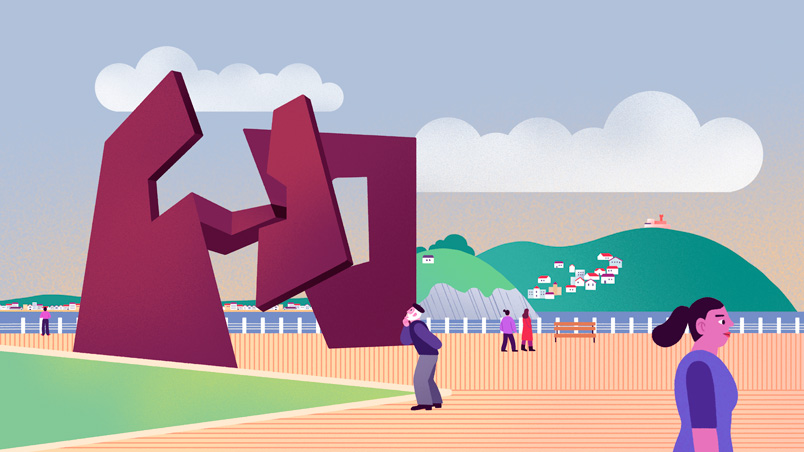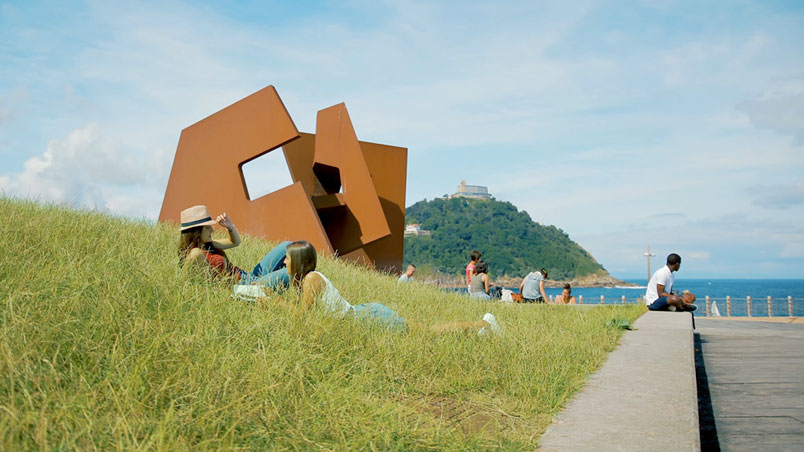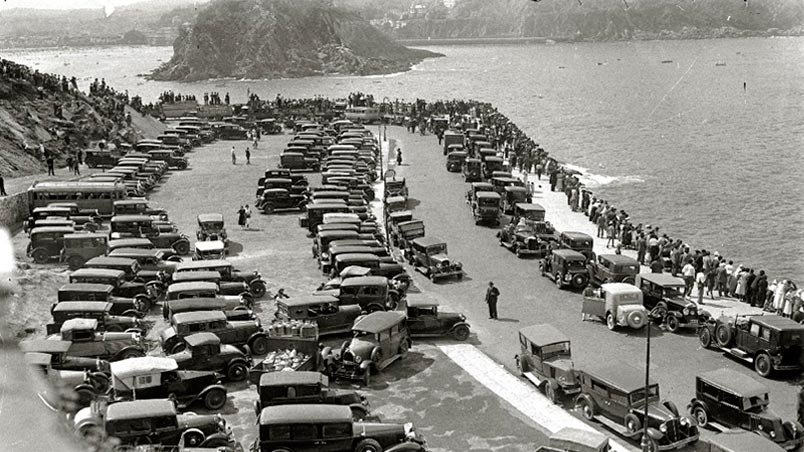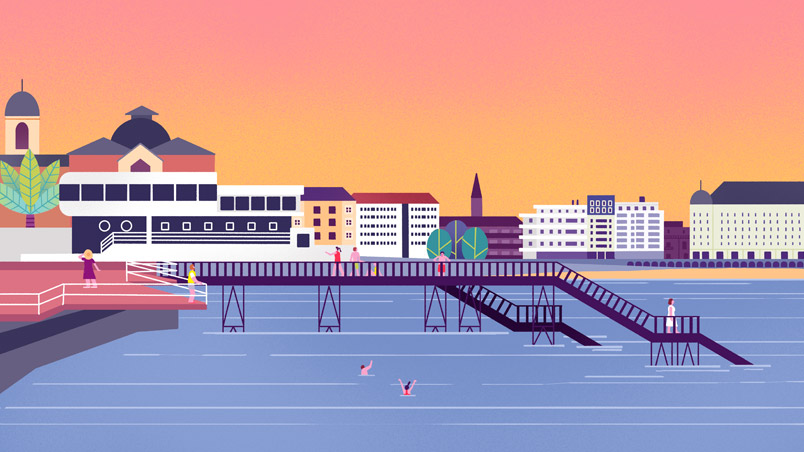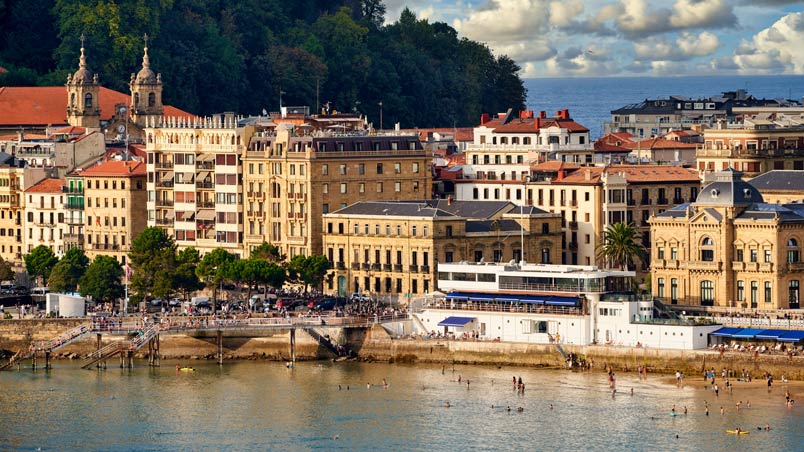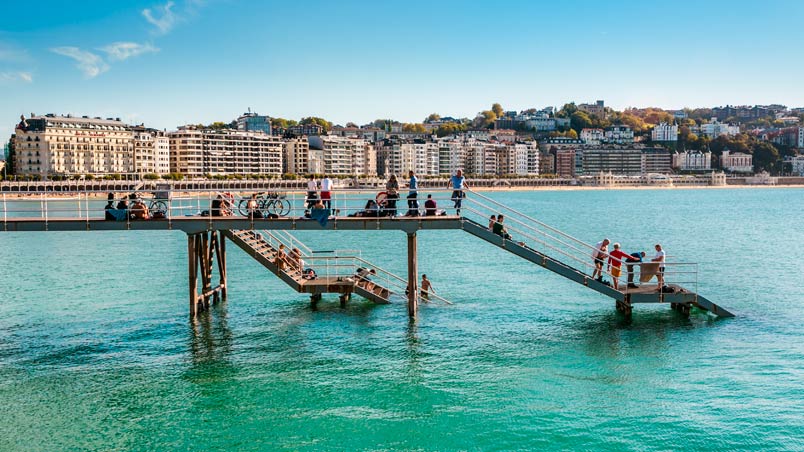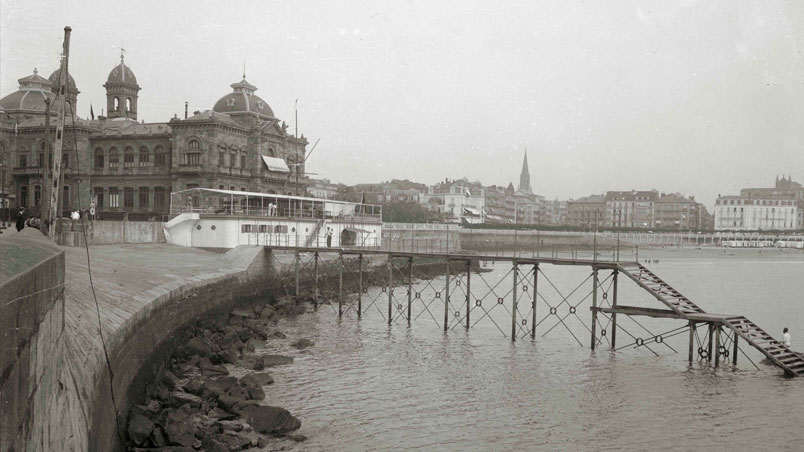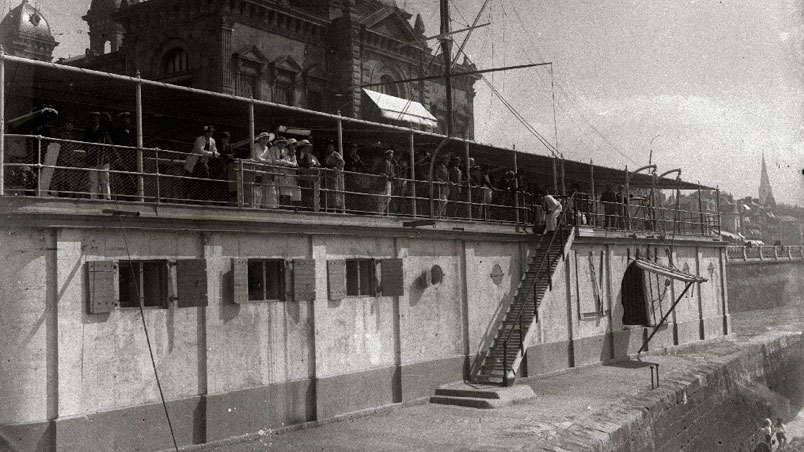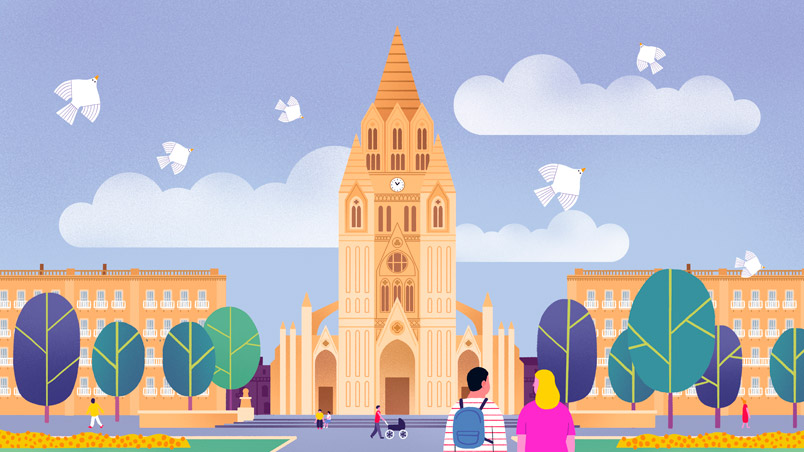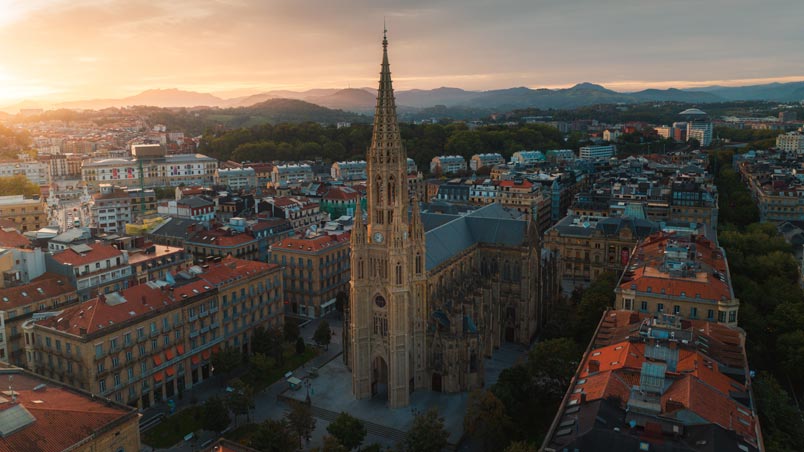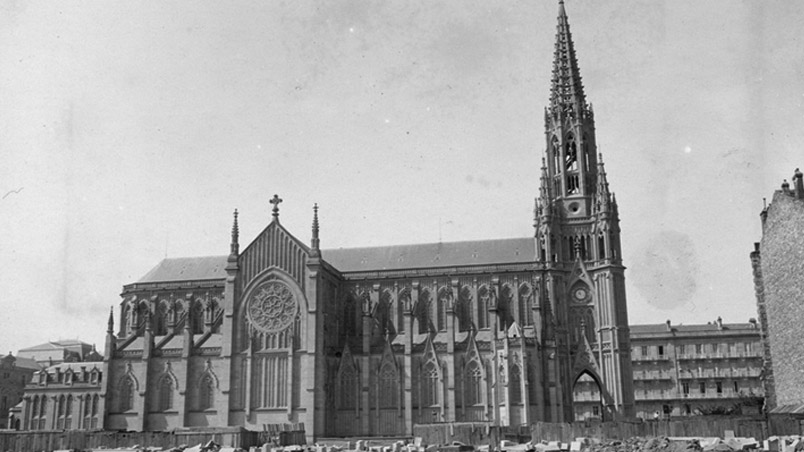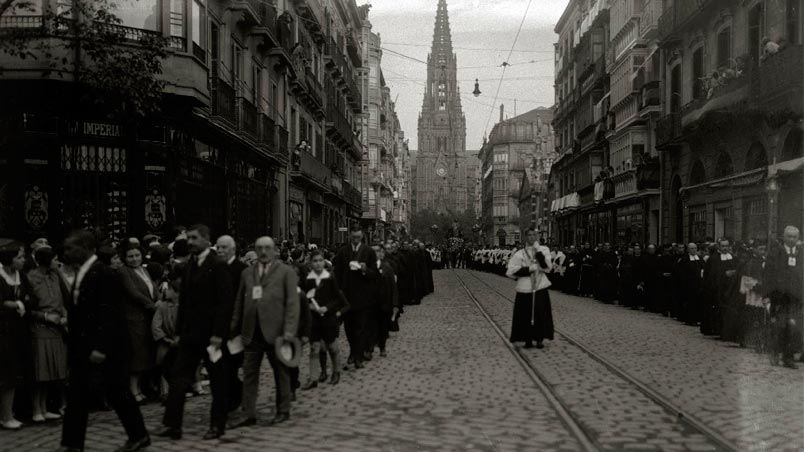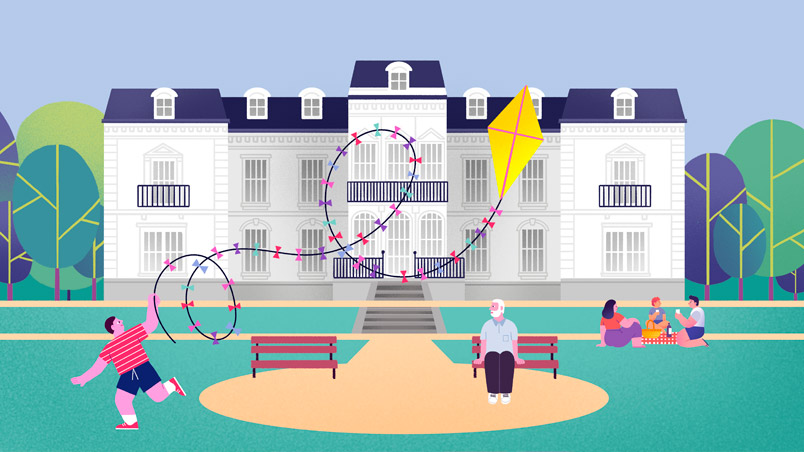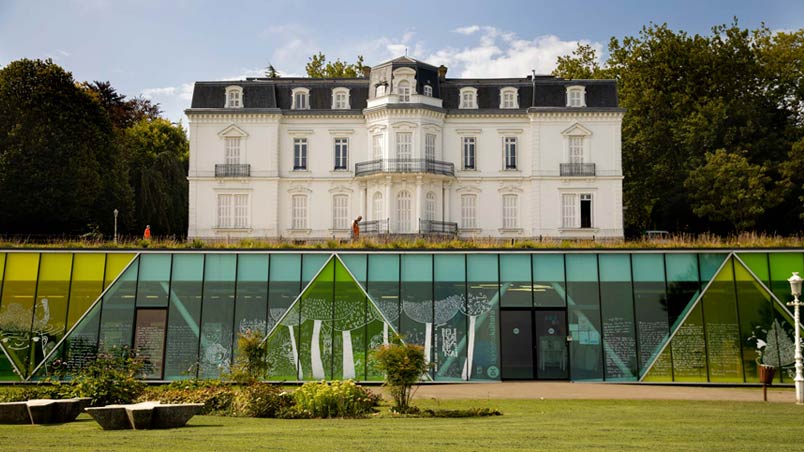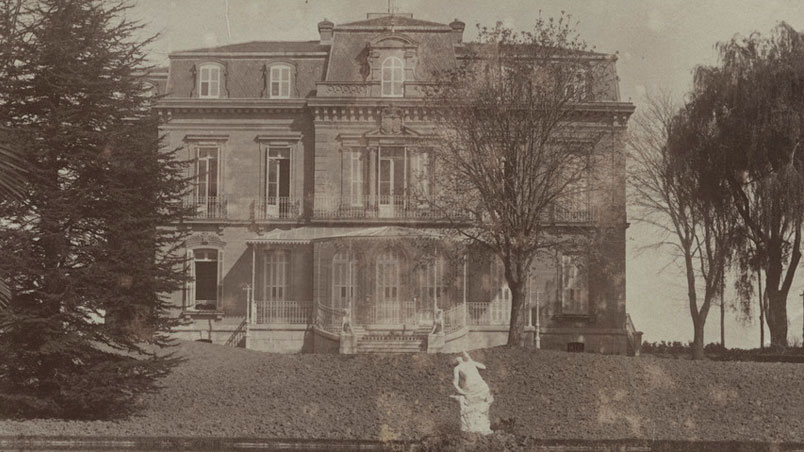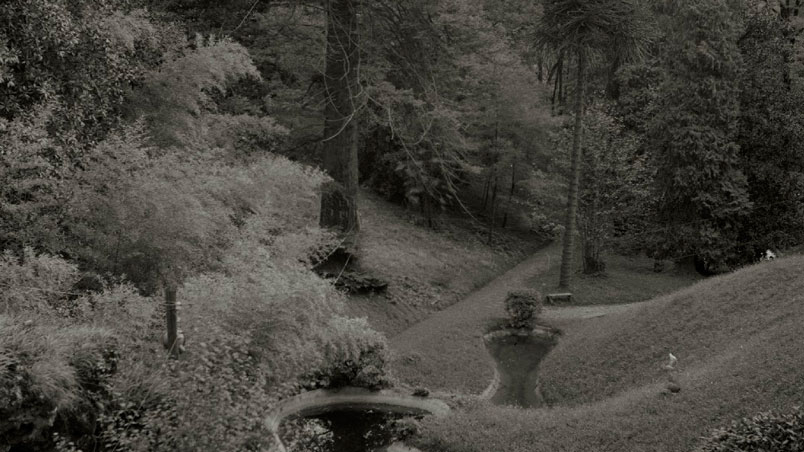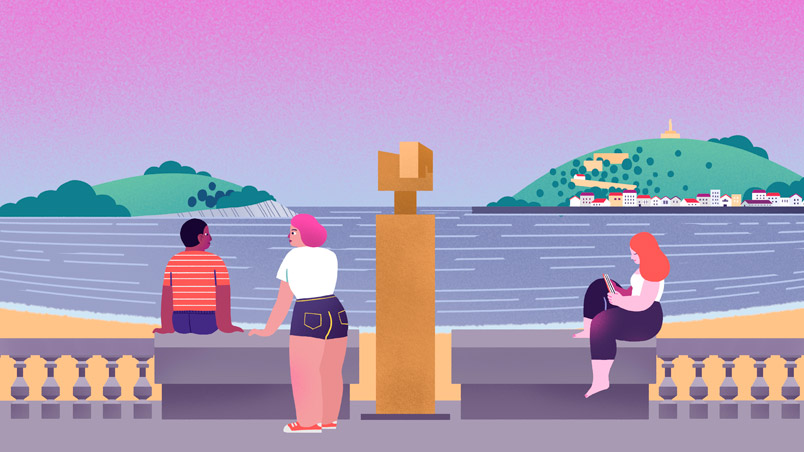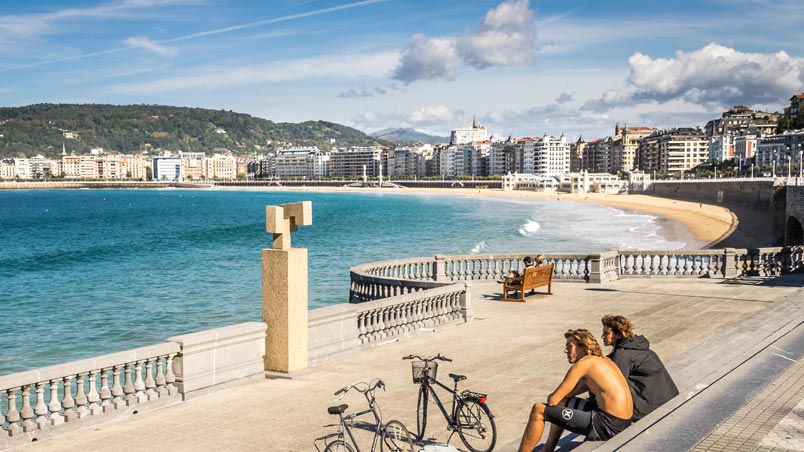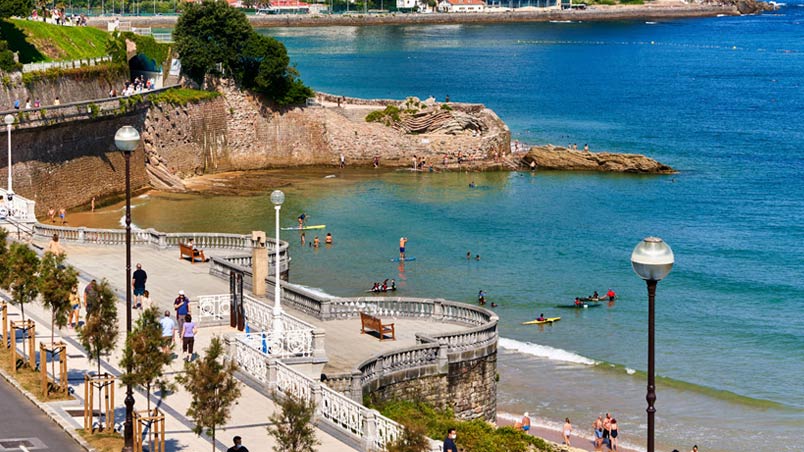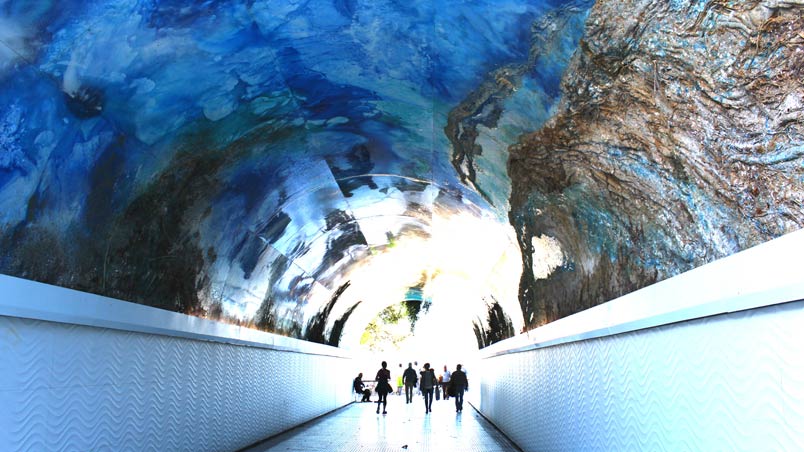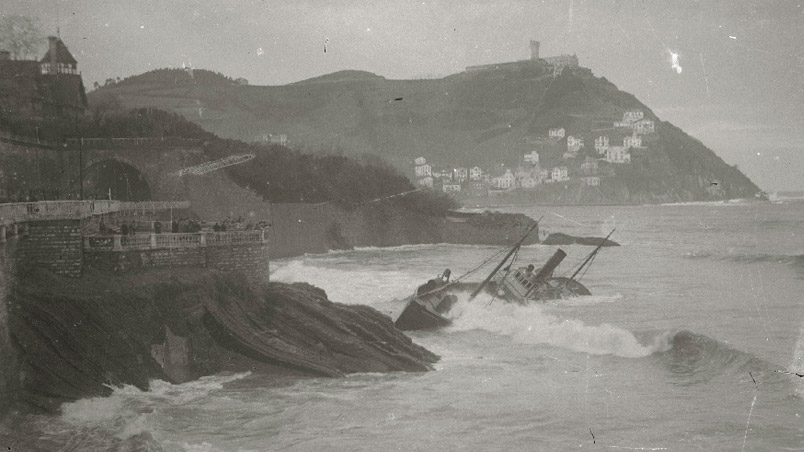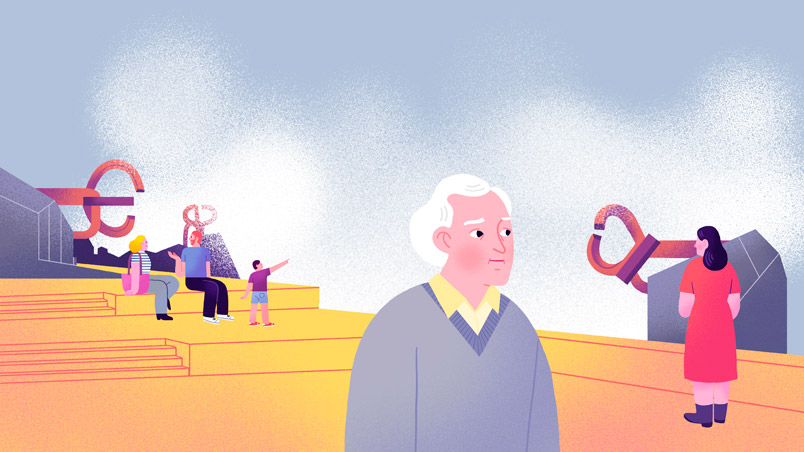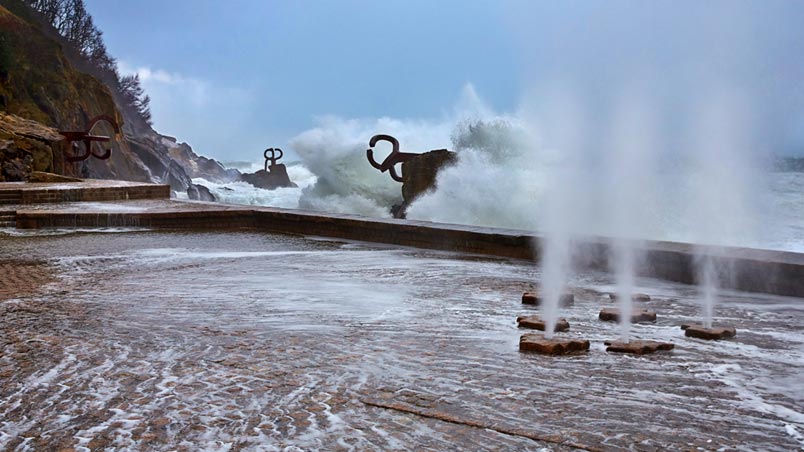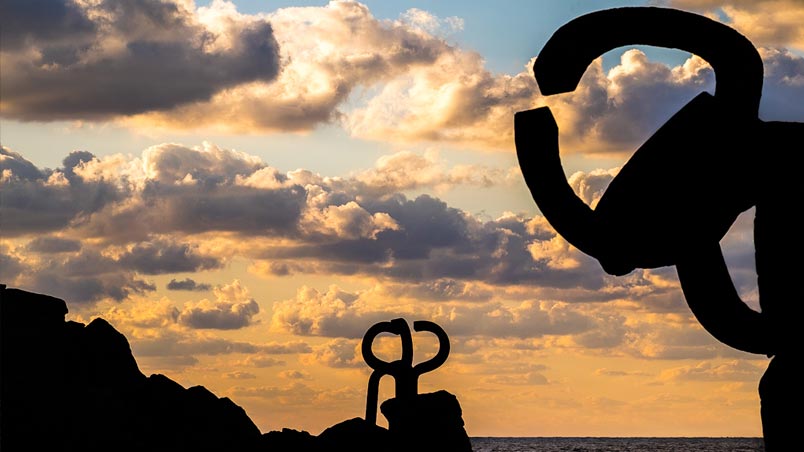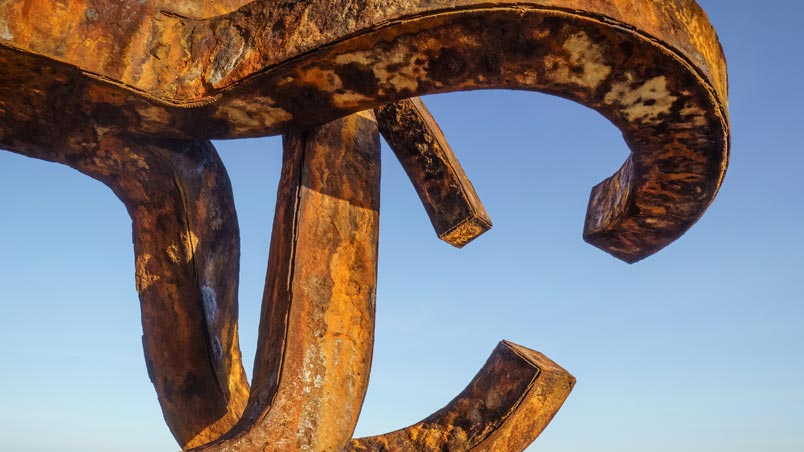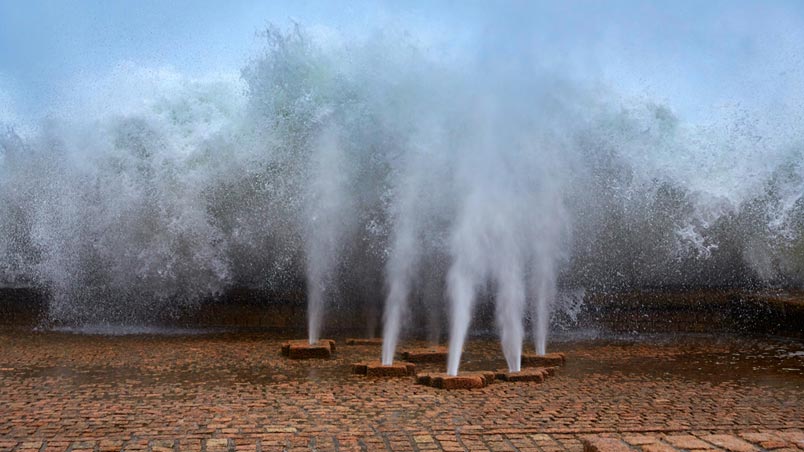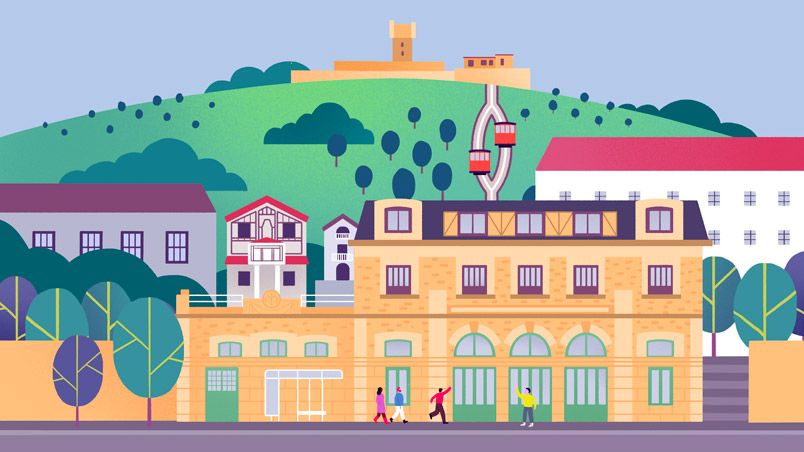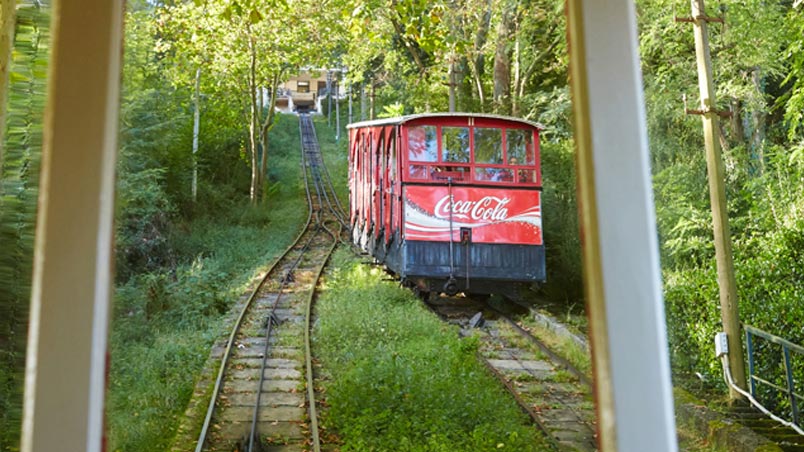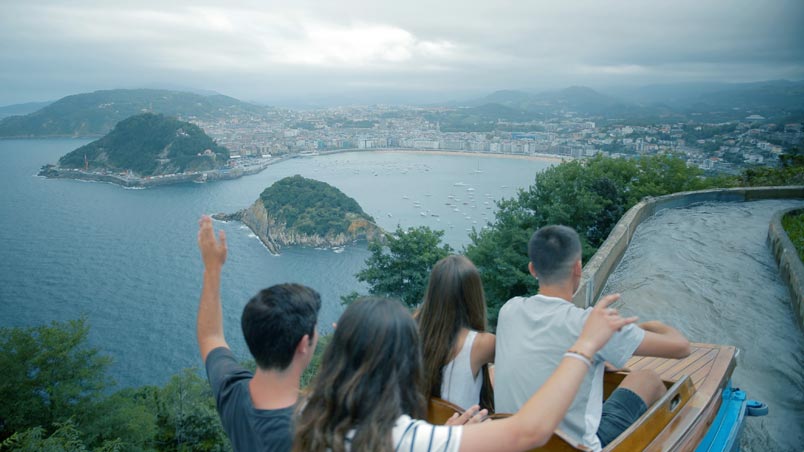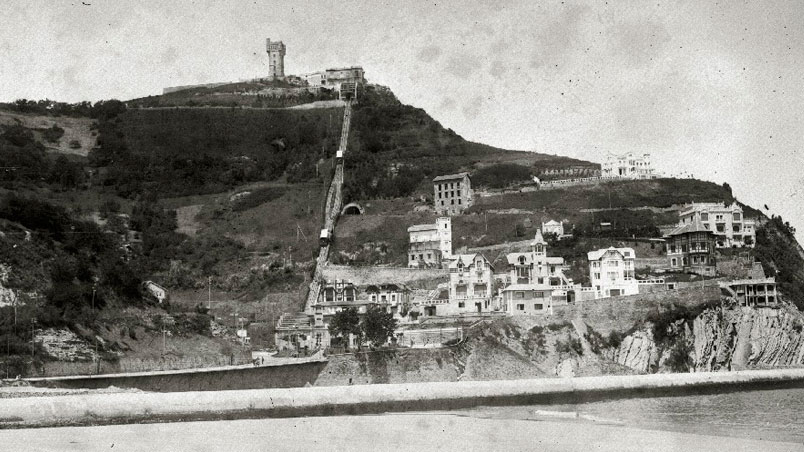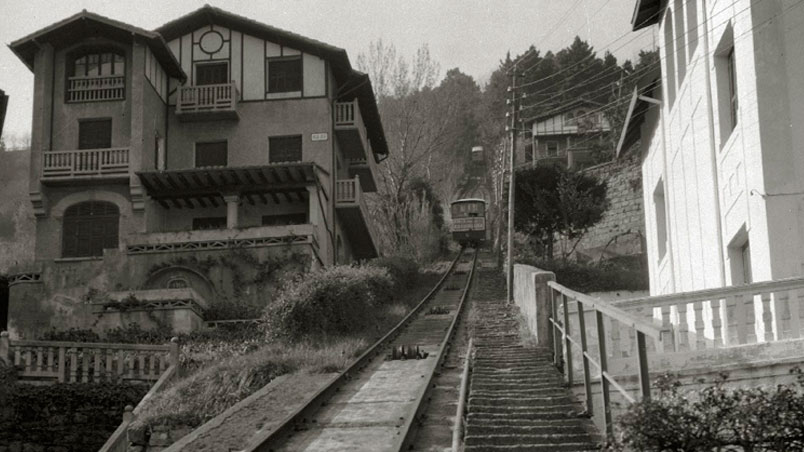Art & Nature walking tour
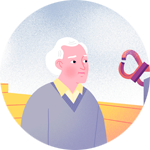
"Since I retired, I am rediscovering my hometown walking the coastline every day. Nature and amazing works of art come together in this wonderful walk. Do you want to join me?"
A city to discover walking
San Sebastian is a perfect city for walking. I take the same walk along the coast every day, from Sagues to the Peine del Viento (Wind Comb) sculpture, and I never get bored. The landscape is always there, but it is never the same.
Along this tour you'll come across a significant collection of works by Basque artists; you'll stroll through parks, mountains and beaches to enjoy nature; and you'll discover impressive viewpoints that you can use to take a break. For me, walking this almost seven-kilometre stretch has become a routine, and yet every day seems to be an unrepeatable experience.
Interactive map of the route
Select the locations
Distance
Stops
Time
1. Paloma de la Paz - Dove of Peace (Sagues)
The tour starts in Sagues, on the esplanade on the border between the city and the sea. Along this coastal promenade people are always walking, coming and going.
Here, under the slopes of Mount Ulía, a giant sculpture overlooking the Cantabrian Sea welcomes us: the Paloma de la Paz (Dove of Peace). It is one of the best-known works by the Basque artist Nestor Basterretxea, a figure created as a plea against violence. It is one of the many works of art to be found along this tour, and strolling along the coast of San Sebastian is like being in an open-air museum.
Sagues is part of the Gros neighbourhood and has become an important leisure area. It features terraces and bars; sports such as skateboarding, cycling, rollerblading and even basketball courts. You can tell that we are next to Zurriola beach because the surfing atmosphere is everywhere.
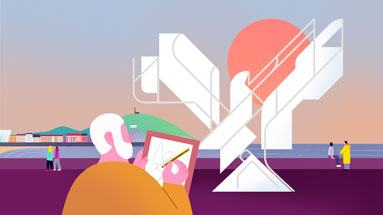
1 Paloma de la Paz - Dove of Peace (Sagues)
2. Kursaal
As we leave Sagues behind, walking along the Paseo de la Zurriola, we stumble upon the Kursaal Conference Centre: the "cubes" designed by the architect Rafael Moneo. The author presented these in the form of two rocks stranded at the mouth of the Urumea River. At first, the Kursaal Palace caused a great stir. It came to replace the previous building: the Gran Kursaal, inaugurated in 1921 and symbol of French architecture of the time. Moneo's creation was a complete rupture from the aesthetics of the Belle Époque in San Sebastian. It was inaugurated in 1999, and became a landmark of modern San Sebastian.
However, the renovation of the neighbourhood began earlier, back in 1995, with the creation of the Zurriola Beach. A wall was built on one side of the mouth of the Urumea to enlarge the beach and protect it from the waves. However, the waves did not disappear, and today the beach is still a surfers' delight.
As many of the activities on the city's cultural agenda take place at the Kursaal, it has become a very popular area. The Jazz Festival, the Musical Fortnight, the Film Festival and countless other events manage to attract crowds.
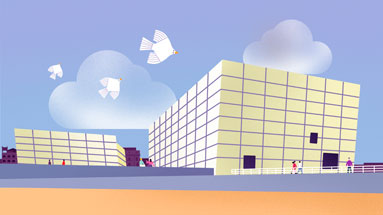
2 Kursaal
3. Sculpture by Oteiza
Walking along the Paseo Nuevo, a unique view opens up on both sides. Starting from the headquarters of the Photographic Association, Mount Urgull can be seen on the left and the vastness of the sea on the right. We reach the sculpture Construcción Vacía (Empty Construction) by Jorge Oteiza as we glimpse the island of Santa Clara on our right. The work, which was awarded the 1957 Sao Paulo Biennial prize, is today a benchmark in contemporary art.
Looking towards Monte Igueldo we can see Eduardo Chillida's Peine del Viento (Wind Comb) at its base. The coast of San Sebastian is home to the work of Basque artists such as Nestor Basterretxea, Jorge Oteiza and Eduardo Chillida. In 2021 they were joined by a fourth member, the first woman: Cristina Iglesias from San Sebastian. Their site, Hondalea, is located in the lighthouse on the island of Santa Clara. The topography of the Basque coastline inspired her to create her work, and it calls for the protection of the environment.
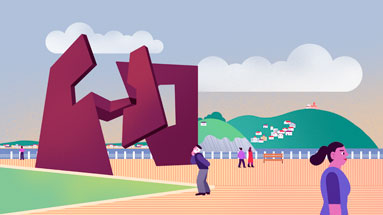
3 Sculpture by Oteiza
4. Naútico
The Náutico is another of the favourite places to sit, linger and look out over the bay. The building housing the Royal Nautical Club San Sebastian, one of the most iconic examples of rationalism, is located here.
It was built by José Manuel Aizpurua and Joaquín Labayen in 1929. The two Basque architects were inspired by naval architecture. Seen from any angle, the Náutico has the appearance of a ship anchored at the quay.
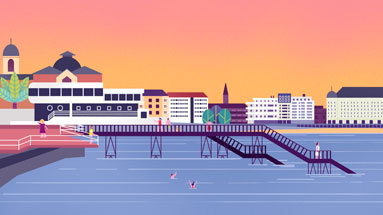
4 Naútico
5. Catedral del Buen Pastor (Cathedral of the Good Shepherd)
As we head from the Paseo de La Concha towards the Centre, we will reach calle Loiola, where we will come across the tallest building in the city: the catedral del Buen Pastor (Cathedral of the Good Shepherd), built in the 19th century. Interestingly, from this pedestrian street, calle Loiola, we can see the Santa María church in the Parte Vieja (Old Town) on one side and the catedral del Buen Pastor (Cathedral of the Good Shepherd) on the other. The building is located in a large square bearing the same name, in the romantic area of San Sebastian. Thanks to its long spire, it is the tallest building in the city and is also the largest church in the city. The church was inaugurated in 1897, and is of neo-gothic style.
On July 18, 1946, a demonstration against Franco's dictatorship took place at the top of the cathedral. Joseba Elosegi, a Basque soldier in the 1936 war, placed the Basque flag with some friends when it was still a forbidden symbol. A public viewpoint named after him was opened near the Catedral del Buen Pastor (Cathedral of the Good Shepherd), in San Bartolomé, in 2021. From there, the rooftops of the city centre, the Atocha tower, the Catedral del Buen Pastor (Cathedral of the Good Shepherd) itself, Mount Ulía and Mount Urgull can be seen.
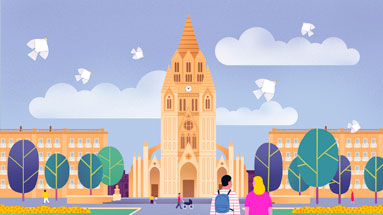
5 Catedral del Buen Pastor (Cathedral of the Good Shepherd)
6. Aiete park
We'll wander away from the city centre and climb a small hill to get to discover another great green area in San Sebastian: Aiete Park. What was once a luxurious country house for aristocratic families has become a public space for everyone to enjoy. For many, it is the oasis of this neighbourhood in the upper part of the city. The grounds, designed by the Bayonne municipal gardener Pierre Ducasse, allow you to escape from the hectic city life and stay in a peaceful and beautiful place.
Although the house belonged to the Dukes of Bailén, it was used as a summer home by many Spanish monarchs, as well as by the dictator Francisco Franco. In 2011 the San Sebastian International Peace Conference was held in this building, which has become a symbol of Basque conflict resolution.
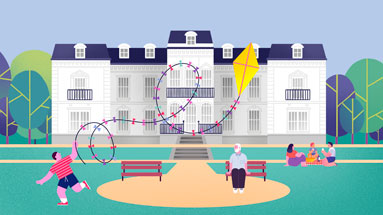
6 Aiete park
7. Homenaje a Fleming (Tribute to Fleming)
As we walk along the Paseo de la Concha, at the Bicentenario Viewpoint we will encounter a sculpture made by Eduardo Chillida in 1955: Homenaje a Fleming (Tribute to Fleming). The sculpture was made in homage to the biologist Alexander Fleming, who discovered penicillin.
Looking out over the bay, we can imagine what the fishermen from San Sebastian could see on their way home. In the past, the city was known as "Irutxulo", because of the three holes they could see between the cliffs as they looked towards land: Ulía, Urgull, Santa Clara and Igueldo.
We are close to Loretopea: this is the rocky hill that divides the beaches of Ondarreta and La Concha. It was once the site of the hermitage devoted to the Virgin of Loreto. The current name derives from the transfer of the toponym Loretopea (at the foot of Loreto) into Spanish. The pedestrian tunnel that connects the Paseo de La Concha with the Antiguo neighbourhood bears the same name and since 2016 has housed a work of art inside it: the Miramart work. The artist Víctor Goikoetxea painted the sea on the tunnel's vault so that passers-by can experience an underwater journey.
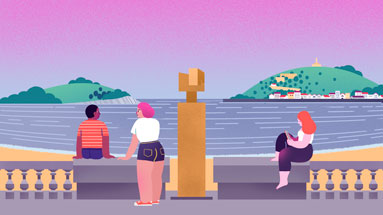
7 Homenaje a Fleming (Tribute to Fleming)
8. Peine del Viento (Wind Comb)
We have arrived at the place that houses one of the best-known symbols of the city, the Peine del Viento (Wind Comb) by the San Sebastian sculptor Eduardo Chillida. Chillida came up with the idea of sculpting in his favourite place. He began to draw the first sketches in the 1950s, and in 1977 the three pieces of steel that make up the Peine del Viento (Wind Comb) were finally put in place. Since then, these three sculptures have been combing the waves and gusts of wind coming in from the horizon. For Chillida, this was "a place to look at the sea, a place where people could live together and meet".
This square was designed by the architect Luis Peña Ganchegui. He wanted to turn this space into a kind of open amphitheatre to enjoy nature's splendour. When the waves of the Bay of Biscay crash with force, the water and the wind come bursting out of the chimneys that he placed on the ground, turning them into amusing geysers.
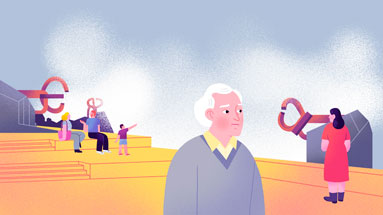
8 Peine del Viento (Wind Comb)
9. El Funicular
To enjoy the beautiful views of San Sebastian, and travel in a time machine, there is nothing like hopping on the funicular railway and going up to the amusement park on Mount Igueldo. It still preserves the essence of the San Sebastian of yesteryear. As we get off the funicular we will spot old retro-style advertisements, and discover that several of the park's attractions are still the original ones: the Swiss Mountain and the Mysterious River, among others.
The funicular was opened in 1912 in order to link the restaurant and casino that were formerly located here. However, in 1924, when General Primo de Rivera banned gambling, the owners were forced to change the use of the premises. When it came to establishing the new direction, the owners of Igueldo Park took the Tibidabo amusement park in Barcelona as a model, which, like that one, turned it into a viewpoint to enjoy the city's scenery and a leisure park. In addition to the Igueldo amusement park, there are countless paths to enjoy nature. Along the nature trails to explore Igueldo we can go down to the seashore, as well as connect with the Camino de Santiago.
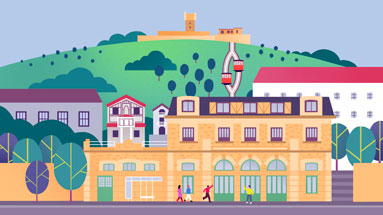
9 El Funicular
Green Routes accessibles and interactives

